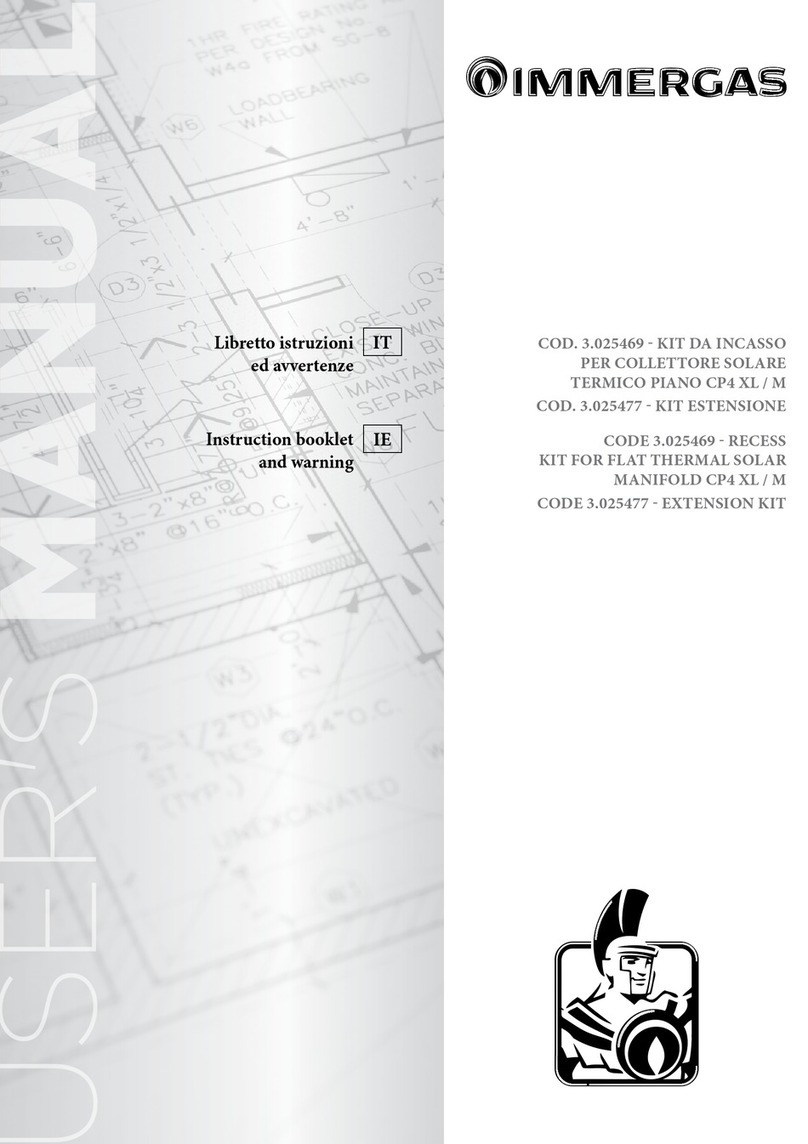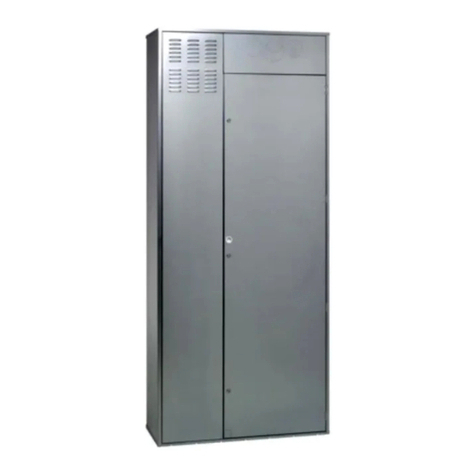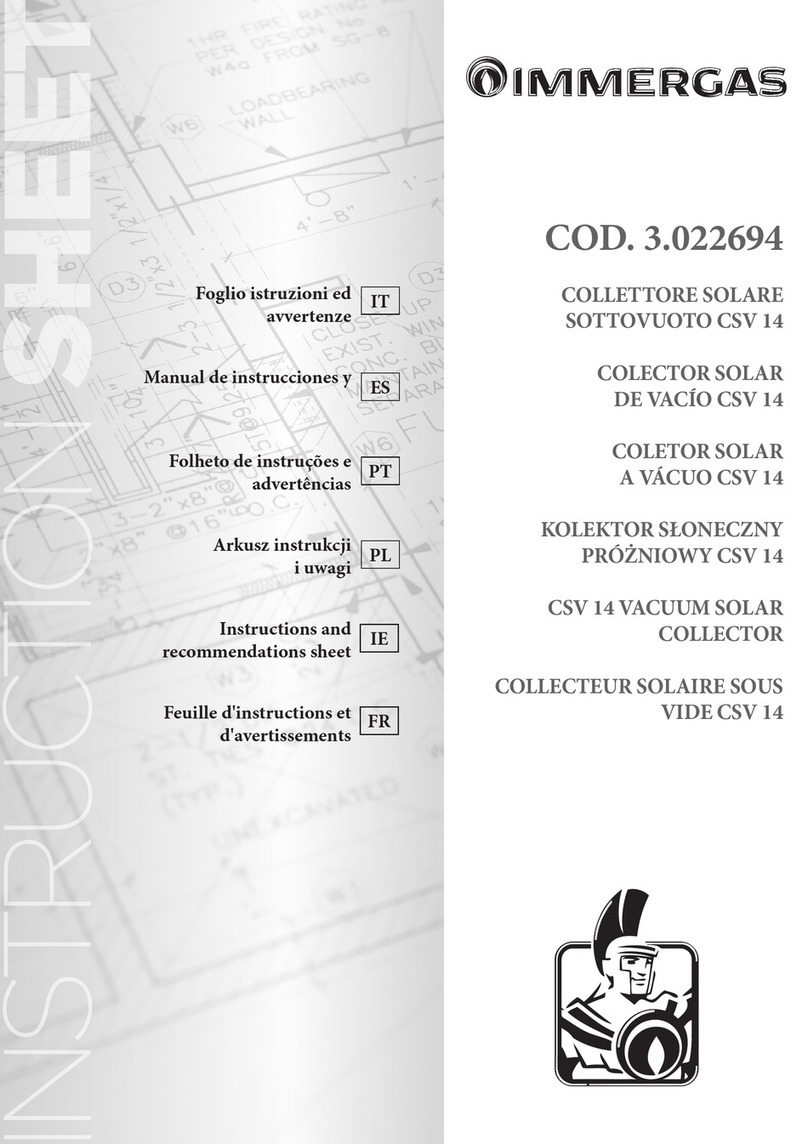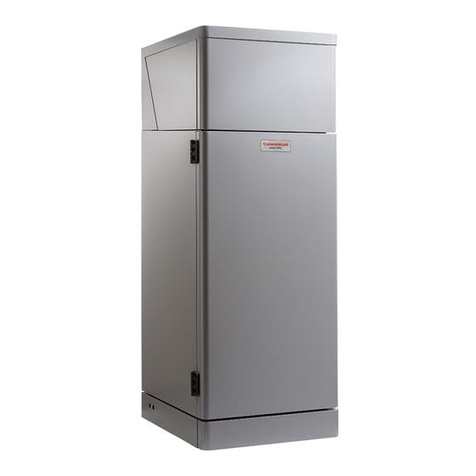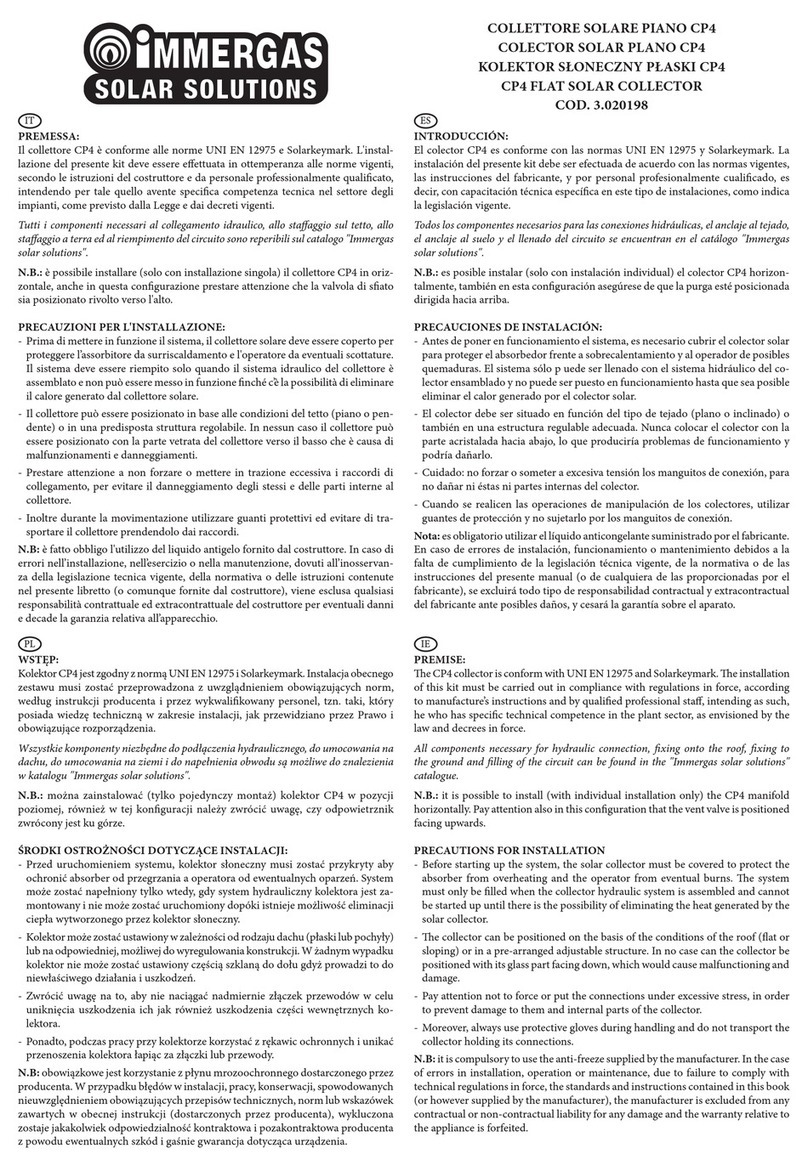
3
Summary
1. General...................................................... 5
1.1 General warnings ............................................ 5
2. Modulating temperature controller kit .. 6
2.1 Assembly, set-up and connection .................... 6
2.2 Assembly........................................................ 6
2.3 Set-up of auxiliary dip-switch functions B and C 7
2.4 CP presence contact input connection............. 7
2.5 Air temperature probe assembly....................... 8
2.6 Connections ................................................... 9
3. 4-speed temperature controller kit ..... 10
3.1 Assembly and connections............................ 10
3.2 Assembly...................................................... 10
3.3 Air temperature probe assembly..................... 11
3.4 Connections ................................................. 11
3.5 Water probe kit management......................... 11
4. Universal card kit for commercial
temperature controller ......................... 12
4.1 Assembly and connections............................ 12
4.2 Assembly...................................................... 12
4.3 Connection diagram with 3-speed thermostat 13
4.4 Connections with 3-speed thermostats .......... 13
4.5 LED signals................................................... 14
4.6 Water probe management with 3-speed
thermostat .................................................... 14
5. 0-10 V demand board kit ....................... 15
5.1 Assembly and connections............................ 15
5.2 Assembly...................................................... 15
5.3 LED signals................................................... 15
5.4 Connection diagram with 0-10V DC
thermostats / signals ..................................... 16
5.5 Connections with 0-10V thermostats.............. 16
6. Feet kit .................................................... 17
6.1 Assembly...................................................... 17
7. 2-way/3-way valve unit kit..................... 18
7.1 List of hydraulic accessories .......................... 18
7.2 Pipeline diameter........................................... 18
7.3 Access to inner parts..................................... 18
7.4 Mounting the thermostatic head..................... 19
7.5 Lockshield adjustment................................... 19
7.6 Way valve with thermo-electric head kit .......... 21
7.7 Way valve with thermo-electric head deviator
valve kit......................................................... 22
7.8 Connections ................................................. 24
7.9 2-way valve unit kit ........................................ 25
7.10 3-way valve unit kit ........................................ 26
8. Cooler-convector, heating, cooling
and deumidification ............................... 27
8.1 Fundamental safety rules ............................... 27
8.2 Description ................................................... 27
8.3 Identification.................................................. 28
8.4 Charts of Water flow - Pressure drop.............. 29
8.5 Dimensions................................................... 30
8.6 Product delivery ............................................ 31
8.7 Handling and transportation ........................... 31
8.8 Access to inner parts..................................... 31
8.9 Installation..................................................... 32
8.10 Minimum installation distances ....................... 32
8.11 Vertically mounted ......................................... 33
8.12 Hydraulic connections ................................... 34
8.13 Condensation discharge................................ 35
8.14 Electrical connections.................................... 36
8.15 Filling the system........................................... 36
8.16 Evacuation of air when filling system............... 37
8.17 First commissioning....................................... 37
9. Modulating temperature controller kit. 38
9.1
SMART TOUCH electronic control panel..............38
9.2
Display .................................................................38
9.3 Key function.................................................. 38
9.4 General On Switch........................................ 39
9.5 Activation ...................................................... 39
9.6 Heating/cooling operation modes setting........ 39
9.7 Stand By......................................................... 39
9.8 Temperature selection ................................... 40
9.9 Automatic operation ..................................... 40
9.10 Silent operation ............................................ 40
9.11 Night-time operation ..................................... 40
9.12 Operation at maximum ventilation speed ....... 40
9.13 Key lock........................................................ 41
9.14 Reduce brightness to minimum...................... 41
9.15 Deactivation .................................................. 41
9.16 Room temperature probe regulation offset...... 41
9.17 Switching off for long periods......................... 41
9.18 Error signals .................................................. 42
10. 4-speed temperature controller kit ..... 43
10.1
LCD electronic control panel ...............................43
10.2 LED indications ............................................. 43
10.3 Key function.................................................. 43
10.4 General On Switch........................................ 43
10.5 Activation ...................................................... 44
10.6 Heating/cooling operation modes setting........ 44
10.7 Stand By......................................................... 44
10.8 Temperature selection ................................... 44
10.9 Ventilation speed regulation............................ 44
10.10Key lock.......................................................... 45
10.11Reduce brightness to minimum...................... 45
10.12Deactivation .................................................. 45
10.13Switching off for long periods......................... 45
10.14Error signals .................................................. 45
11. Maintenance........................................... 46
11.1 Cleaning the outside...................................... 46
11.2 Cleaning air suction filter ................................ 46
11.3 Energy saving tips ......................................... 47






